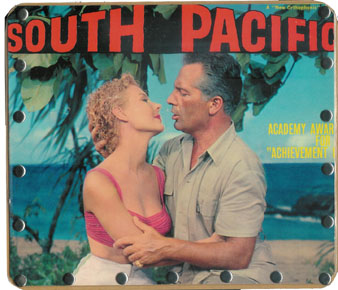In 2004, I went to the theater with a friend to see the movie "Stepford Wives." Even before I had seen the movie, I had some understanding of the basic story concept since my mother had seen the 1975 version of the movie.
The story, a slightly creepy dark comedy, explores several interesting ideas. What if a human being could be robotically programmed to "love" you? Would that love be rewarding if the person's will was not involved? Similar themes have been explored in other ways such as in the movie "Love Potion Number 9." What if someone loved you but only because that person was under the influence of a potion?
Sandra Bullock and Tate Donovan in "Love Potion Number 9."
"Stepford Wives" also explores another "what if." What if a human being could be robotically programmed to do all the perfect things? The person's natural weaknesses and flaws would be erased. The person would be "perfect," but the person's will is not involved. How rewarding could this arrangement be?
The Female Improvement System
Although the 2004 "Stepford Wives" movie explores the husband and wife relationship, with the wife as robot, the '70's series of movies included "Stepford Children" and "Stepford Husbands," so the same concept could be applied to artificially perfect husbands and children. If your wife or husband, son or daughter hugged you, but only because they were programmed to do so, would it be as rewarding as if it were an act of the will? Planting computer chips in human brains is a bit far-fetched for real life, but other mind control devices such as brainwashing and hypnosis are not.
Sometimes experts in hypnosis persuade people to do goofy things they wouldn't normally do for our entertainment. I personally would never volunteer for such an experiment, but at the same time, I confess I have found watching these experiments entertaining and disturbing at the same time. Below is a man hypnotising members of an audience at a state fair. Notice that one of the girls is convinced she is in love with the hypnotist and wants to hug him.
On the subject of robotics, I've been doing a bit of reading as research for some of my fiction writing. Some roboticists are interested in making robots as human-like as possible. This Japanese humanoid robot below, HRP-4C, sings and dances while imitating human-like mouth and head movements and human breathing.
The "Daily Mail" online, on June 12 of this year, had an article about this "last moment" robot below that could soothe a lonely person who is about to die in lieu of family or friends.
Eddie Wrenn of the "Daily Mail" writes:
"A smooth white robot starts gently rubbing your arm with a swing-saw motion and then, with a metallic voice, says: 'I am the Last Moment Robot. I am here to help you and guide you through your last moment on Earth. 'I am sorry that your family and friends can't be with you right now, but don't be afraid. I am here to comfort you. You are not alone, you are with me. Your family and friends love you very much, they will remember you after you are gone. ' Last moments: The robot gently swings its arm back and forth to simulate a relaxing stroke.
Is this a better way to go than dying alone? Or is it creepy? Is this kind of affection wanted when it is received by placebo, or worse, simply the pre-recorded responses from an unthinking, programmed machine?"
As fascinating as robot technology is, I don't think robots can replace humans in such a personal role, and judging from the reaction to the article, I think most people agree.
On a less creepy note, Connie Francis, in the '60's, sang a light and funny song, but suitable to the theme of this blog, "Robot Man," about how a robot's company would be more reliable than a live date. Here are some actual robots dancing to the song.
Really though, the "Stepford Wives" story plot has always made me think of a theological application. God could have created us, automatically programmed to be morally perfect and to love God as He loves us. He didn't He gave us free will.
"For God so loved the world that He gave His only begotten Son that whosoever believes in Him should not perish but have everlasting life." John 3:16 To believe or not to believe is a choice of our will.
Once we believe, God works with us to morally perfect us. Romans 8:28 a"And we know that for those who love God all things work together for good, for those who are called according to his purpose. For those whom he foreknew he also predestined to be conformed to the image of his Son..."
From C.S. Lewis in "Mere Christianity:"
"God created things which had free will. That means creatures which cn either go wrong or right. Some people think they can imagine a creature which was free but had no possibility of going wrong: I can not. If a thing is free to be good, it is also free to be bad. It makes evil possible. Why then did God give us free will? Because free will, though it makes evil possible, is also the only thing that makes possible any love or goodness or joy worth having. A world of automata -- of creatures that worked like machines -- would hardly be worth creating. The happiness which God designs for His higher creatures is the happiness of being freely, voluntarily united to Him and to each other in an ecstasy of love and delight compared with which the most rapturous love between a man and a woman on this earth is mere milk and water. And for that they must be free."














































